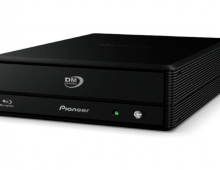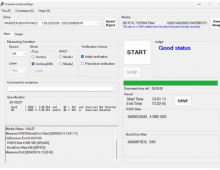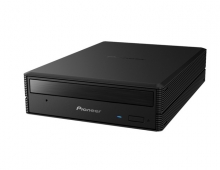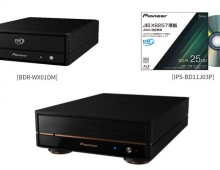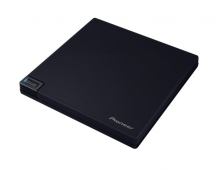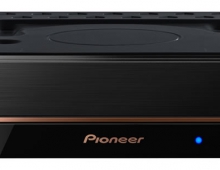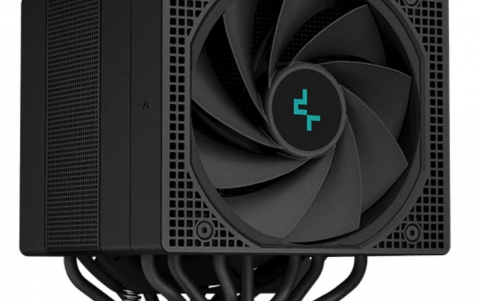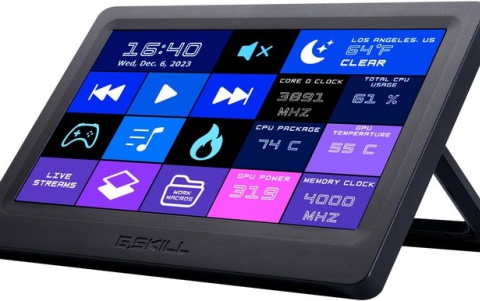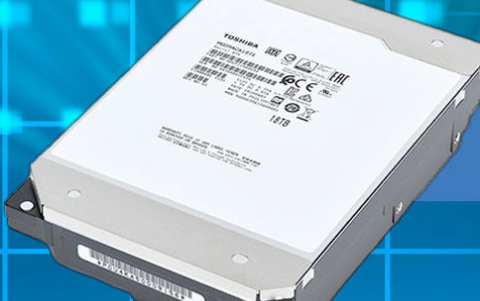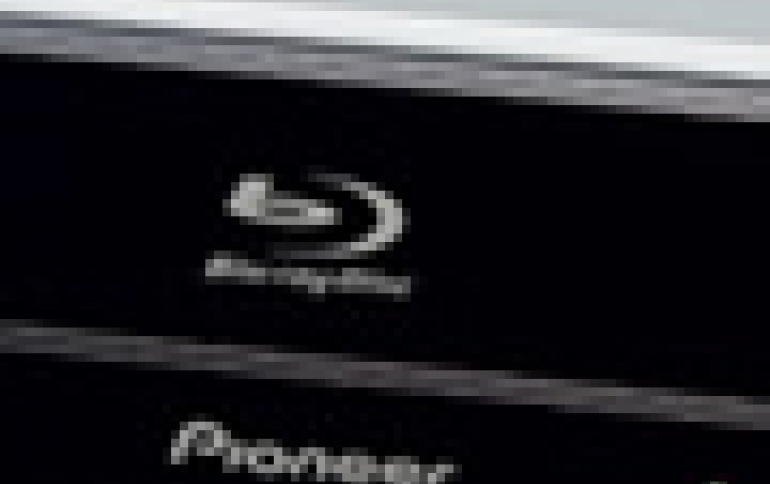
Pioneer BDR-S03J 8x BD Burner Announced
Pioneer will release the BDR-S03J, the company's first 8x Blu-ray disc burner in Japan in January, with worldwide shipments to follow.
The SATA drive offers reading and writing of CD/DVD and Blu-ray media.
It features a dustproof structure that keeps dust away from the internal of the drive's case, as well as Pioneer's Disc-Resonance Stabiliser technology. This controls the airflow generated by disc rotation in order to minimize disc warping, which can occur when media rotates at high speed. In addition, the airflow within the unit has been improved, enabling air to easily circulate around the internal chassis, reducing noise caused by the build-up of air. Finally, the drive has been re-designed to prevent the escape of air, especially through the front bezel, that can create significant amounts of background noise.
Pioneer has also implemented its PowerRead and PureRead functions in the new drive.
There is a difference between how AV and PC handle discs that are difficult to read. In a standard PC environment, DVD-Video is treated as 1 type of data; therefore, if a section is deemed unreadable, playback will stop. With PowerRead, the user-experience is similar to the AV side, making it possible to play the remainder of the disc. Note that with PowerRead, unreadable DVD or Blu-ray disc contents remain unreadable. PowerRead skips to the next readable address. PowerRead can be used for BD/DVD media that have been recorded in the BDMV/BDAV and DVD video/VR formats.

In addition, the drive features the "PURE READ" function, to compensate the digital noise introduced when a scratched or dusty audio CD is reproduced. The idea behind PURE READ is to try and correct damaged sectors, which are read from the Audio-CD. The feature re-reads damaged sectors to see if it can recover them. When these damaged sectors are read in a normal scenario, the sector may well be read without any serious error, but sometimes pops or crackles can be heard in the final ripped file. When a sector that is difficult to read is detected, the laser tries to re-read the damaged sector. Not just re-reading the sector, but the drive will actually adjust its read parameters (I.E. higher or lower laser power and the angle of the laser beam are adjusted) to try and get the best possible read-back from that damaged sector. An algorithm calculates the "best" or "average" result it achieves, and that information (I.E. the best-possible result) is then used as part of the final file.
Last but not least, the BDR-S03J optimizes the disc's rotation speed depending on the user's application - for example, if watching a movie or listening to music, the disc velocity is reduced keeping background noise to a minimum.
Proceeding to the drive's main specifications, the BDR-S03J has the ability to write at 8x speed (ZCLV) on BD-R SL and BD-R DL media. Of course, these speeds can be even lower (6x, 4x or 2x) according to the media you are using. BD-RE and BD-RE DL discs can be recorded at 2x. BD-ROM/R/RE (SL and DL) discs can be read at 8x (transfer rate) and at 2x during the reproduction of Blu-ray content.
The new model also supports 16x write speeds on both DVD-R/+R media and 8x burning on Dual/Double Layer media. Other writing speeds include 5x for DVD-RAM, 8x for DVD+RW , 6x for DVD-RW, 32x for CD-R and 24x fro CD-RW. The drives also come with a 4MB cache memory and it is compatible with Windows XP and Vista OS.
It will ship next January in Japan for about 38,000 Yen ($400).
It features a dustproof structure that keeps dust away from the internal of the drive's case, as well as Pioneer's Disc-Resonance Stabiliser technology. This controls the airflow generated by disc rotation in order to minimize disc warping, which can occur when media rotates at high speed. In addition, the airflow within the unit has been improved, enabling air to easily circulate around the internal chassis, reducing noise caused by the build-up of air. Finally, the drive has been re-designed to prevent the escape of air, especially through the front bezel, that can create significant amounts of background noise.
Pioneer has also implemented its PowerRead and PureRead functions in the new drive.
There is a difference between how AV and PC handle discs that are difficult to read. In a standard PC environment, DVD-Video is treated as 1 type of data; therefore, if a section is deemed unreadable, playback will stop. With PowerRead, the user-experience is similar to the AV side, making it possible to play the remainder of the disc. Note that with PowerRead, unreadable DVD or Blu-ray disc contents remain unreadable. PowerRead skips to the next readable address. PowerRead can be used for BD/DVD media that have been recorded in the BDMV/BDAV and DVD video/VR formats.

In addition, the drive features the "PURE READ" function, to compensate the digital noise introduced when a scratched or dusty audio CD is reproduced. The idea behind PURE READ is to try and correct damaged sectors, which are read from the Audio-CD. The feature re-reads damaged sectors to see if it can recover them. When these damaged sectors are read in a normal scenario, the sector may well be read without any serious error, but sometimes pops or crackles can be heard in the final ripped file. When a sector that is difficult to read is detected, the laser tries to re-read the damaged sector. Not just re-reading the sector, but the drive will actually adjust its read parameters (I.E. higher or lower laser power and the angle of the laser beam are adjusted) to try and get the best possible read-back from that damaged sector. An algorithm calculates the "best" or "average" result it achieves, and that information (I.E. the best-possible result) is then used as part of the final file.
Last but not least, the BDR-S03J optimizes the disc's rotation speed depending on the user's application - for example, if watching a movie or listening to music, the disc velocity is reduced keeping background noise to a minimum.
Proceeding to the drive's main specifications, the BDR-S03J has the ability to write at 8x speed (ZCLV) on BD-R SL and BD-R DL media. Of course, these speeds can be even lower (6x, 4x or 2x) according to the media you are using. BD-RE and BD-RE DL discs can be recorded at 2x. BD-ROM/R/RE (SL and DL) discs can be read at 8x (transfer rate) and at 2x during the reproduction of Blu-ray content.
The new model also supports 16x write speeds on both DVD-R/+R media and 8x burning on Dual/Double Layer media. Other writing speeds include 5x for DVD-RAM, 8x for DVD+RW , 6x for DVD-RW, 32x for CD-R and 24x fro CD-RW. The drives also come with a 4MB cache memory and it is compatible with Windows XP and Vista OS.
It will ship next January in Japan for about 38,000 Yen ($400).

